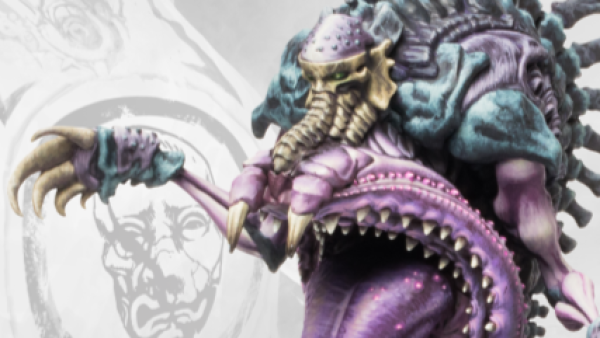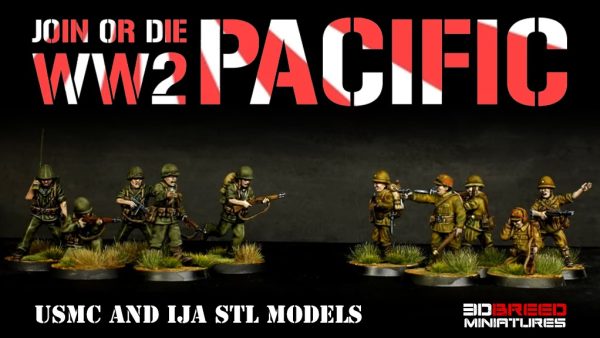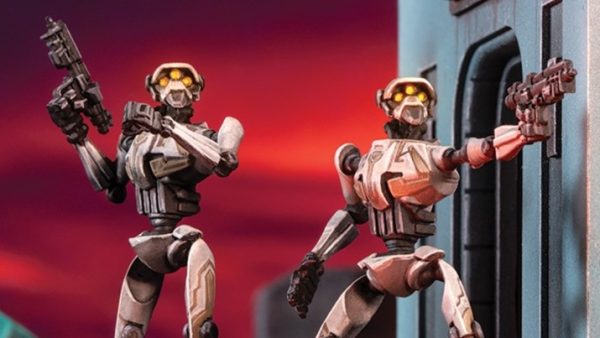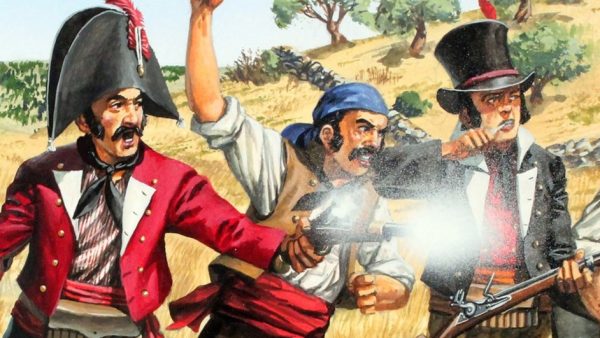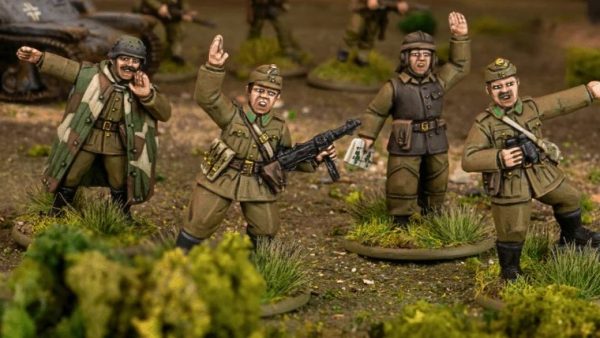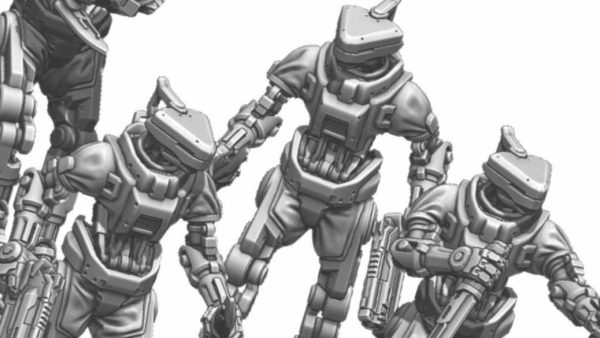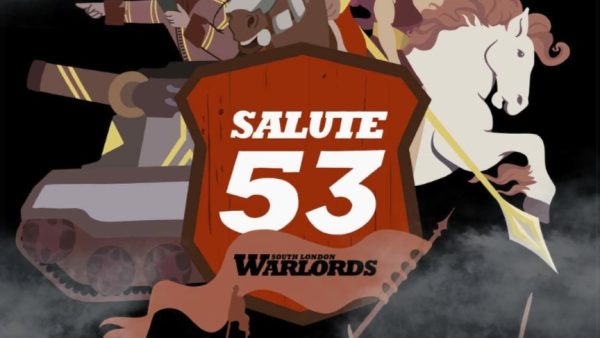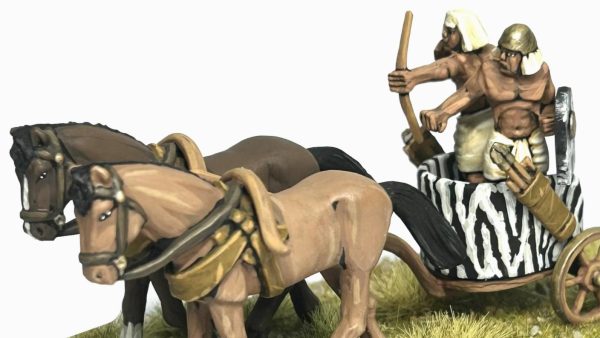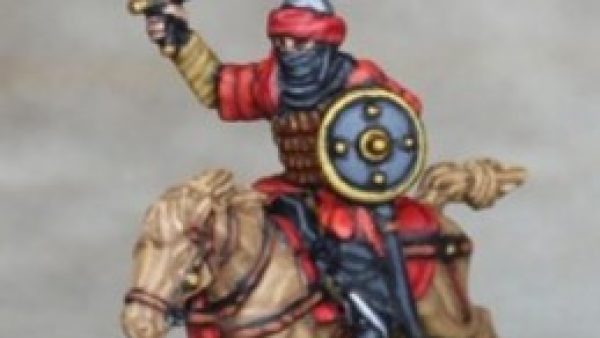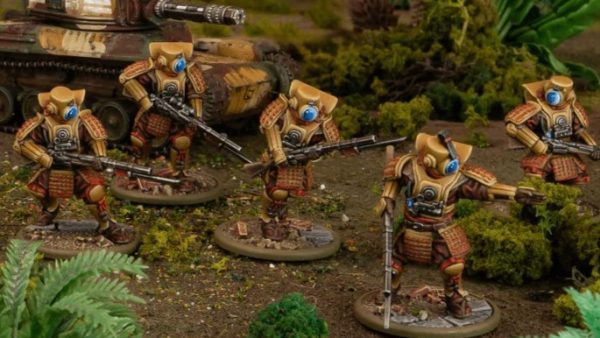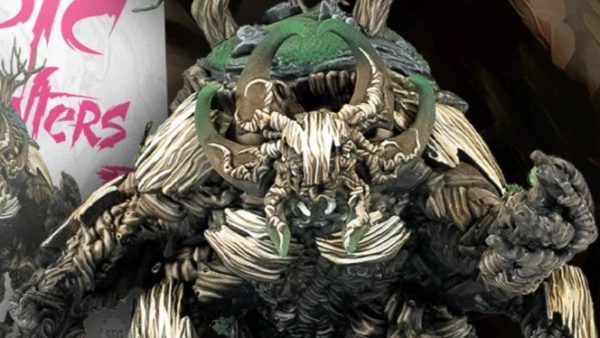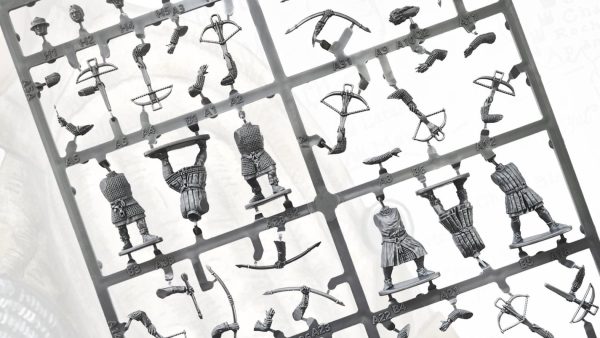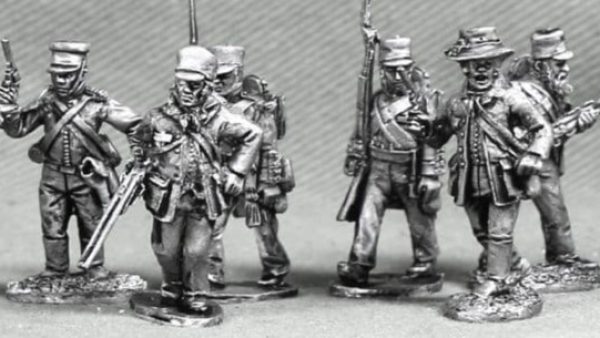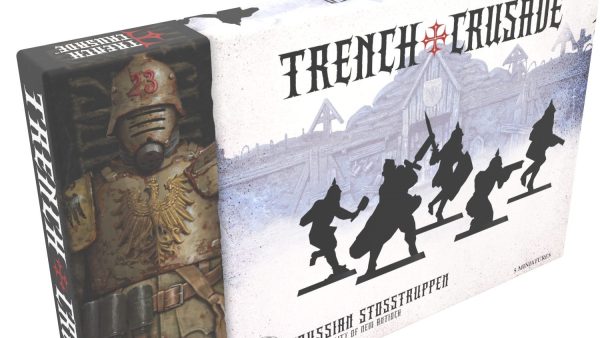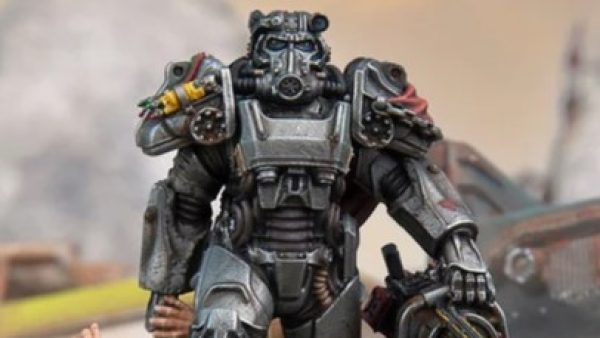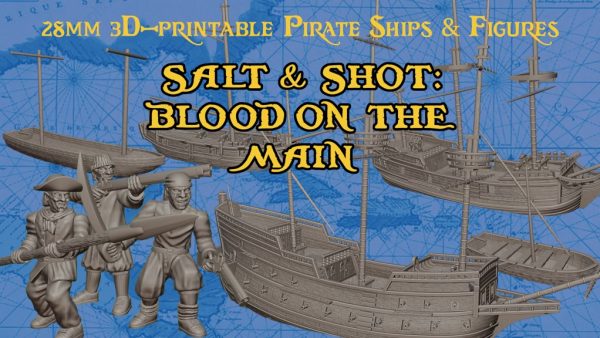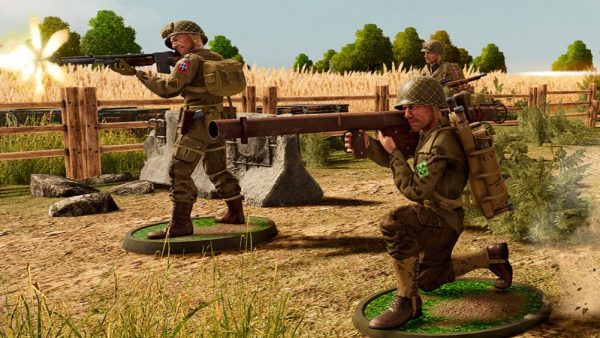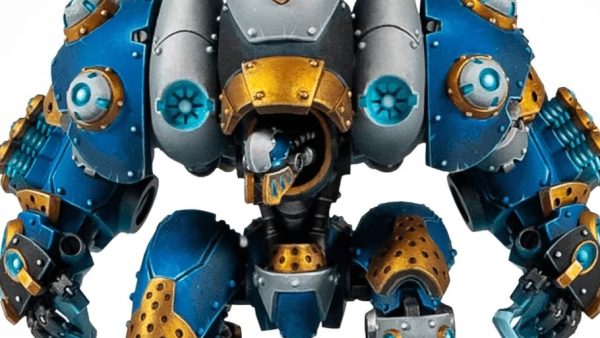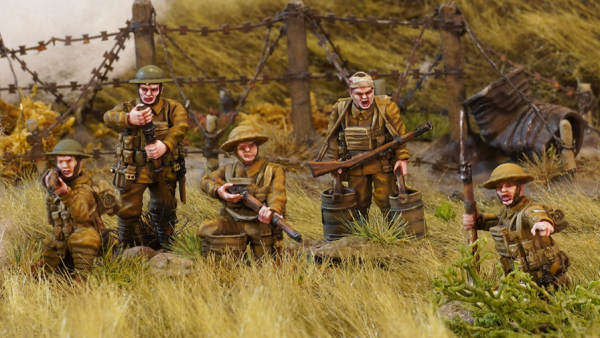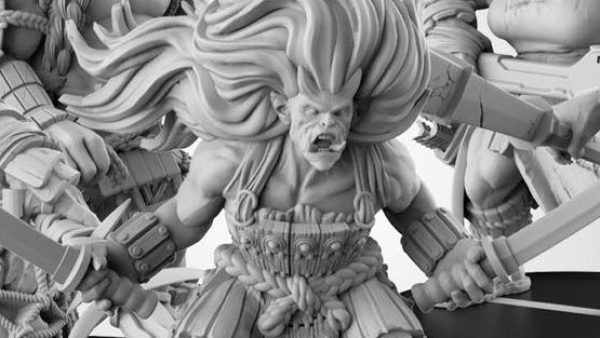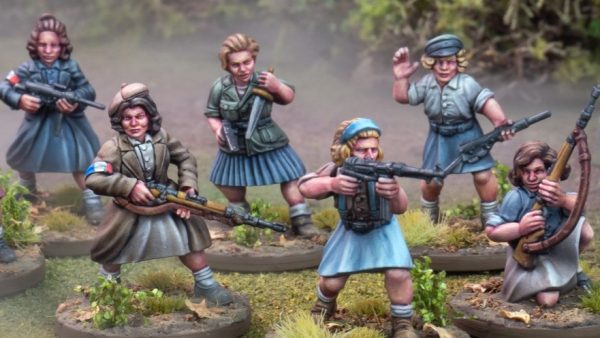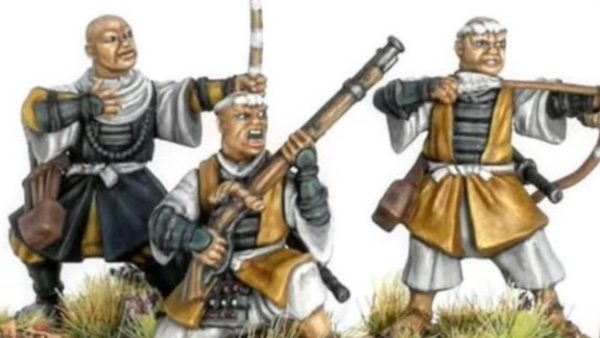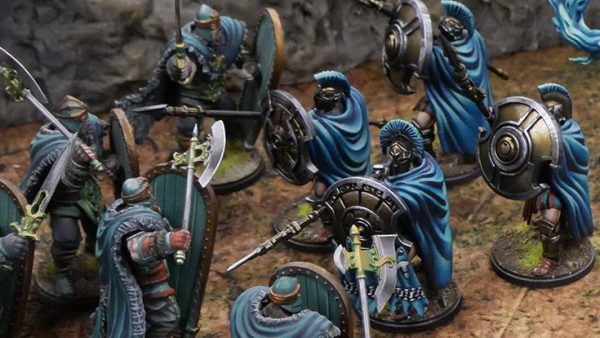Home › Forums › Historical Tabletop Game Discussions › Battle of the Bulge – December 16, 1944
- This topic has 60 replies, 11 voices, and was last updated 6 years, 11 months ago by
 zorg.
zorg.
-
AuthorPosts
-
December 21, 2018 at 5:39 pm #1316509
Have you considered replaying the bulge with comets to see if that makes a different @oriskany ?
December 23, 2018 at 2:06 pm #1317007Good afternoon, @zorg –
In answer to your question, no. I’ve used Comets in the past (World War 2.5, Part 02), but not in the Bulge.

1) The Bulge is an American battle. Churchill himself had to step in and say this publicly when Montgomery tried stealing the credit for the victory – a move that damned near broke the back of Eisenhower’s patience and ruined Monty’s career once and for all (already hanging by a thread after getting so many Americans killed in that Market-Garden fiasco).
1a) I hope I don’t sound too “nationalist” here, but I just believe in keeping participation in historical battles in proper perspective. For the record, I always roll my eyes when Americans focus on the handful of American pilots that participated in … say … the Battle of Britain.
2) 29th Brigade was the only British unit to actively participate in an operational sense in that battle, to my knowledge. So one brigade is roughly 1/3 of a division, against 30+ German divisions that participated (26 initial, plus reserves),and 50+ American divisions. That means that 29th Brigade = 1/240th of the forces involved. But those others 80+ divisions were engaged for the full 30-day duration of the battle. 29th fought in this one action on 25 December. Now not all of these divisions fought all 30 days, but if we approximate down to half and taking this into account, 29th Brigade put in 240 x 15 = 1/3,600th of the “division-days” participation in the Bulge, or 00.027%.
2a) So if 00.027% of the total force clicks up one notch by upgrading from Cromwells to Comets, does that make a difference? No.
3). Did 29th Brigade have Cromwells? I know 11th Armoured Division did, but we’ve already discussed how 11th Arm’d Div and 29th Arm’d Brgde are not synonymous.
4) Did the British Army upgrade Cromwells to Comets, or regiments / battalions equipped with Shermans? I honestly don’t know.
5) Would the British have upgraded tank troops, squadrons, battalions, and regiments en masse to Cromwell, or create mixed troops like they did with their other 17-pounder armed tank, the Firefly? Historically speaking there’s really no such think as a Firefly troop (by and large), one Firefly was added to three standard Shermans to create an upgraded troop. Would the British have adopted a similar policy with the 17-pounder Comet? Again, I honestly don’t know. But this is the reason the Firefly never had as much impact as the American variants like the Easy Eight or Jumbo (even though the British Firefly was objectively the better tank, assuming they had some HE-FRAG ammo). You can’t spread your heavy strike elements thinly throughout your army and expect it to have the same effect as concentrated, hard-hitting units.
5a) – I only go off on that tangent because I don’t know if the British would have treated their 17-pounder Comets the same way, and the question has a real impact on your question – would the Comets have made a difference in the Bulge or any other battle in which they participated?
December 23, 2018 at 11:25 pm #1317119yes they drip feed new vehicles in to the army still I think. look at the navy build two new state of the art carriers and no planes smart or what.
December 24, 2018 at 12:14 pm #1317191@oriskany totally agree on all your points plus:
The Comet was a fast tank more suited to open terrain I’m really not sure it would been any more effective than the Shermans given the close nature of the Ardennes Terrain. Not only that would anyone want to take a so far untried tank (specially give previous British experience with Crusaders) into such an intense battle and it make sense that they reverted to the tried and tested Shermans.
From what I’ve read it was both recon and and normal units converting to Comet rather than Just Cromwell.
To answer your question on ratio James, it was to be a total conversion,though there was a suggestion that they retained the 95mm Cromwell as initially they were not sure of the effectiveness of the 77mm H.E. round based on its lousy 17pdr perfomance, but haven’t read that it proved to be a problem. There was so little German Armour left by the time of its introduction that like the Pershing it is difficult to access its effectiveness.
December 24, 2018 at 2:29 pm #1317210Well, @zorg – those carriers without aircraft are a partially “our” fault here in the US. The only aircraft those carriers will be able to launch are the new JSF-35 Lightning II to my knowledge. It’s the only way any navy besides the US Navy (with their new Gerald Ford class nuclear carriers) will be able to put supersonic, air-superiority fighters and strike aircraft into enemy airspace, i.e., what a “real” carrier is for.
So the Queen Elizabeth class (I think that’s the name) was built for the JSF-35. There was a lot of drama on both sides of the water, though. Americans felt like we were giving away fighter planes so the UK could “pretend to have a real navy again” – while people in the UK felt the US was taking advantage of the UK, giving them some toys in exchange for two “free” carriers that will do more or less what we ask them to do anyway.
Added to that, the JSF-35 turned out (surprise, surprise) to be very expensive. So for a while the project was cancelled, which really screwed over the Royal Navy who were building these two carriers and now had no aircraft to base on them.
But last I read, the JSF-35 is back on track, so hopefully those QEs will have proper strike / fighter groups before long.
December 24, 2018 at 3:28 pm #1317217Good information, @bobcockayne – those 95mm Cromwells are the “Centaurs” right?
Yeah, what was the deal with the 77mm / 17lbr HE ammo? I keep getting different stories on that. I remember the 2-pounder / 40mm had no HE ammo period, the 6-pounder 57mm had none at first, and the 17-pounder? I’m always confused by that. Did they ever make any? Was it widely issued?
December 24, 2018 at 3:48 pm #1317218This is from Tank encyclopaedia via a former employee at Bovington re the 2pdr
The High-Explosive Controversy
It has long been thought that the 2-Pounder gun was never equipped with High-Explosive (HE) shells, this is not the case however. HE was available to the 2-Pounder gun, but British military thinking was that firing Explosive Shells was the job of the Artillery. As such, towed 2-Pounder crews deployed by the Royal Artillery were equipped with HE ammunition, but Tanks, designed for infantry support such as the Matilda II, were not equipped with them.The 2-pounder actually had two types of exploding shell produced for it, namely the 1934 – 1937 pattern APHE shell and the HE fragmentation shell. The shell weighed 1.87 Pounds and used the Hotchkiss base fuse Mark IV. The shell is a blunt-nosed serrated cylinder made of cast iron designed to strike the ground and pitch back into the air then explode, scattering fragments into enemy infantry and animals such as horses.
This shell was used by tanks of the BEF in France 1940 but although available in North Africa, was out of favor with crews preferring to stock their ammo racks with AP ammunition. However, anti-tank units always carried a supply for deterring infantry assaults against them.
The 1934 -1937 pattern APHE shell was produced before trials of the 2 Pounder gun took place but failed to meet the War Department’s specifications of being able to have a 70% (7 in 10) probability of penetrating 14mm. of vertical face hardened rolled homogeneous armor plate (Vickers “Vibrax” at a range of 500 yards.
In tests the Hotchkiss Mark.IV. base mounted fuse either fell out in the barrel during firing or fell out when the shell hit the test target despite the actual unexploded shell actually penetrating. In other instances, when the fuse stated in the shell would explode with no or partial penetration.
Because of this, the British Army elected to dispense with APHE ammunition from 1937 to the present day. Maximum penetration was 48mm. at 100 yards versus vertical FHRHA as live APHE and 59mm. at 100 yards versus vertical FHRHA fired inert/unfilled. 562,000 were produced between 1934 and 1937, none were fired in combat or even issued. Instead, stocks were used up on firing ranges in the UK for training and issued to home defense anti-tank units during 1940 after Dunkirk.
December 24, 2018 at 5:24 pm #1317238Yes the JSF35 looks to be a great plane when/if they get them. @oriskany is their not information about 2-pounder he shells when they designed the gun/tank the he shot was made in very limited numbers for the tests but the government stop the order for standard production for the tanks I will stick in the Link if I can find it.
December 24, 2018 at 7:53 pm #1317250Some quick anniversary action for a battle of the Bulge engagement, 24 December, 1944:
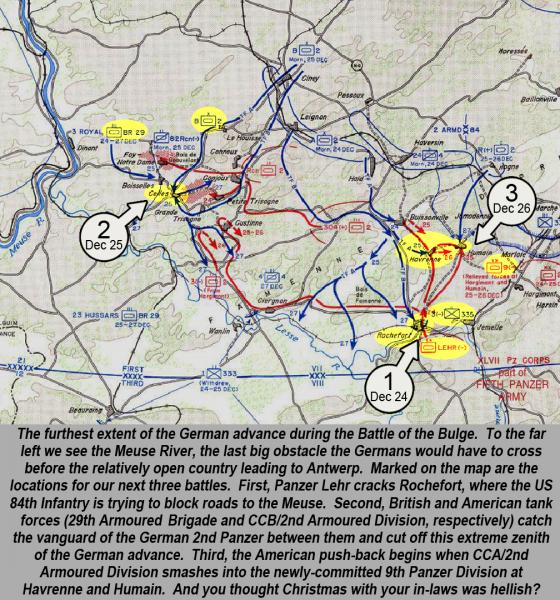
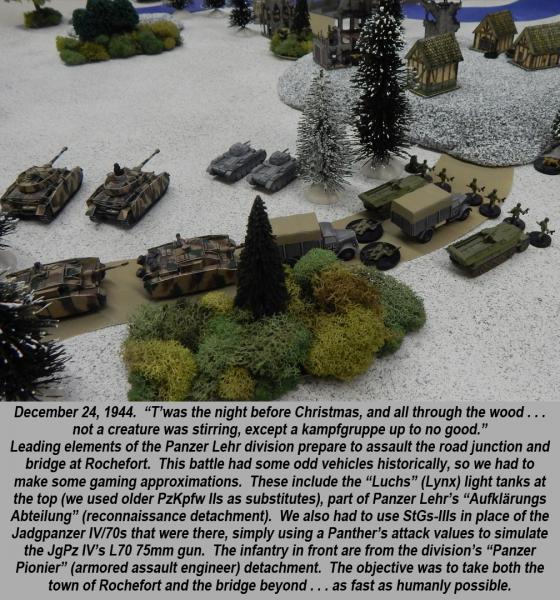
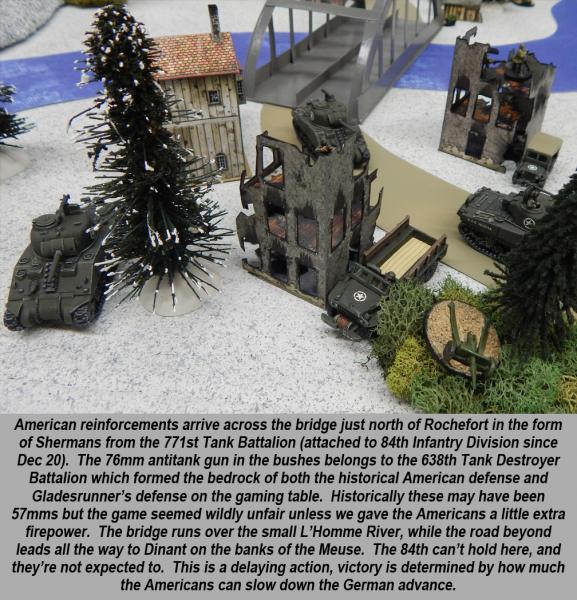
And the end for Kampfgruppe Peiper at La Gleize, where … if memory serves … there is still a hotel to this day with a non-functional PzKpfw VIb King Tiger (one of Peiper’s) parked out front. Played this game years ago against my brother, @amphibiousmonster .
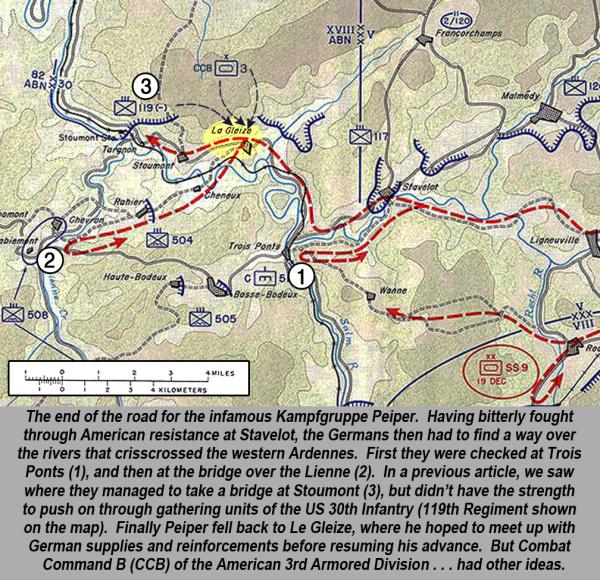
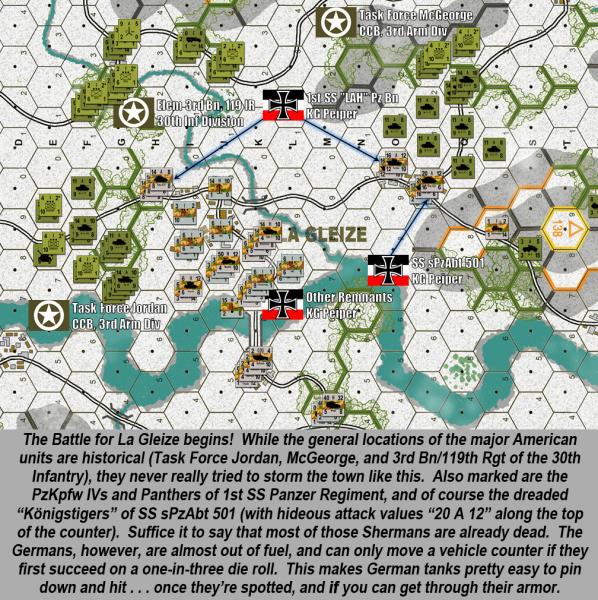
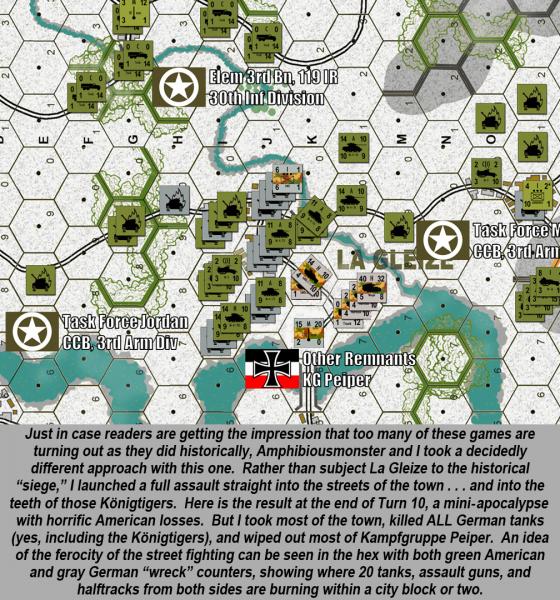 December 24, 2018 at 11:02 pm #1317271
December 24, 2018 at 11:02 pm #1317271Good information, @torros . 😀
Yeah, @zorg – more details in @torros ‘ post – but the general gist is, whether or not APHE or HE-FRAG ammo was developed for a gun … and whether that ammo was adopted, issued, and used widescale among different branches of units that actually deployed weapons of that caliber (2 lb / 40mm on tanks vs AT battalions and regiments) can often be two different things.
December 27, 2018 at 1:49 pm #1317568@oriskany, did do a reply on 24th on your question on 17pdr H.E, virtually finished it but time ran out on me.
So the Centaurs you mention with the 95mm Howitzers which were in fact the only version of the Centaur to see combat under that name. The reason I say that is, many of the original tanks built as Centaurs had there Unreliable and under powered liberty engines replaced by the meteor and renamed Cromwells.
95mm Howitzer were to equip both used to arm the Churchill Mark V and VIII, the Cromwell VI & VIII .
Bit of a strange beast the 95mm Howitzer
to quote wikipedia ‘The Ordnance QF 95 mm howitzer was built up from a section of a 3.7-inch anti-aircraft gun barrel, the breech mechanism of the Ordnance QF 25 pounder field gun/howitzer and the recoil mechanism of the Ordnance QF 6 pounder anti-tank gun’.
They did try and produce a towed version based on the German Sig 33 but didn’t iron out the bugs before it was declared obsolete.
As for the 17dr HE the original problem is that to survive the stress of the high velocity 17pdr the original explosive charge was actually smaller than in a standard Sherman 75mm’ 15lbs TNT at around 13.34lb so wasnt particularly popular with tank crews , even when reduced charge shells became available it wasn’t much better at 15.4lb. So generally when shooting at infantry the Sherman 75mm worked better , British crews in Italy were more than happy with the 75mm particularly in the mountainous terrain they usually ended up fighting in. It does appear that the 75mm, use as artillery was never taught in Normandy as it was with the 8th Army in Italy.
Now as for how much the 17pdr H.E round was issued here are some figure and draw your own conclusions
1942 only AP/APC produced 116000/6000
1943 AP/APC 863000/834000 for H.E. 67000
1944 APC/APCBC 679000/510000 , the new APDS 37000 and H.E. 100000 and H.E. RC 160000
1945 it evened out with APCBC/APDS 103000/160000 to H.E. RC and the new H.E. HC super at 63000/145000
Hope that helps.
December 27, 2018 at 3:17 pm #1317590Actually, yes it did, @bobcockayne , thanks! When using Fireflies in Panzer Leader people often ask me whether we should adopt a “2-pounder tank gun” rule (no use against soft targets except in overrun – basically, no HE ammo). I never quite know what to say.
December 28, 2018 at 10:33 pm #1317872hi ho peoples I hope everyone had a good Xmass.
a link about the two pounder as promised different from the one I remember or perhaps an updated version .
https://en.wikipedia.org/wiki/Ordnance_QF_2-pounder
a bit more digging to see what else I can find.
December 29, 2018 at 10:52 pm #1318064December 30, 2018 at 2:48 am #1318074Great links, @zorg – and it gets the “big picture” right about the qualitative merits and flaws of the Sherman.
But man. This is the reason we can’t watch TV documentaries for historical research. In the first minute of the first video:
Talks about Shermans, shows an M10 Tank destroyer.
Mentions George S. Patton, shows Omar Bradley. Also, Patton didn’t command the Normandy invasion. He wasn’t even involved.
Patton “selected” the Sherman as his tank of choice – no he didn’t. M4 was the US standard tank before Patton was even a major-general, or America was really in the war.
*sigh* TV documentaries … the bane of my existence.
-
AuthorPosts
You must be logged in to reply to this topic.





























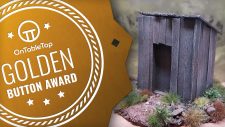


![Very Cool! Make Your Own Star Wars: Legion Imperial Agent & Officer | Review [7 Days Early Access]](https://images.beastsofwar.com/2025/12/Star-Wars-Imperial-Agent-_-Officer-coverimage-V3-225-127.jpg)









